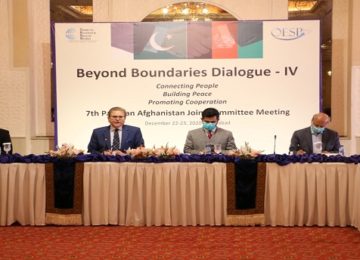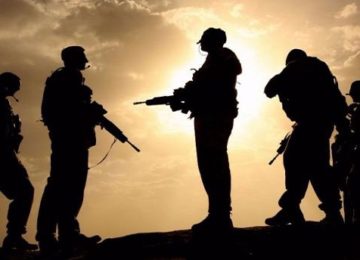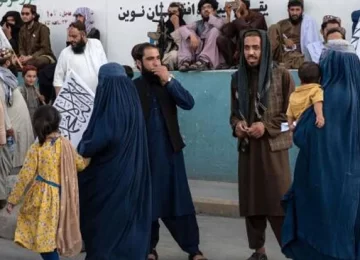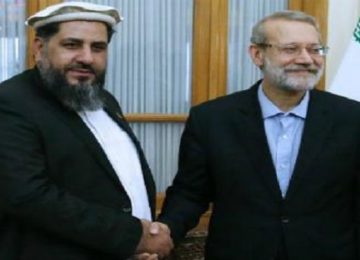November 15, 2017
A peace process with the Taliban is almost certainly the best way to end the war in Afghanistan, and arguments for postponing efforts to get one underway overlook the costs of prolonging the conflict.
October marked the sixteen-year anniversary of U.S. military operations in Afghanistan. President Donald J. Trump’s announcement of a new South Asia strategy in August 2017 affirmed an open-ended U.S. military commitment in Afghanistan, raising questions about ending the United States’ longest war. Meanwhile, the Taliban has increased its territorial and population control in the past year; the Special Inspector General for Afghanistan Reconstruction reported in October that the Taliban influences or controls more than 13 percent of Afghanistan’s 407 districts and contests another 30 percent.
A preponderance of experts, U.S. and NATO military leaders, and senior officials in the Afghan government and those of its neighbors have concluded that the conflict cannot be won militarily. Instead, a meaningful peace process involving the Afghan government, the Afghan Taliban, and the United States, with the support of regional powers and NATO allies, almost certainly remains the best way to end the war on terms that would advance U.S. interests, but there are significant obstacles to the emergence of such a process in the next year.
Successive U.S. administrations have held mixed positions on peace talks with the Taliban, but none of them prioritized efforts to conclude the conflict through a political process. The George W. Bush administration reportedly refused a Taliban offer of surrender in 2002. The Obama administration, following its 2009 decision to surge U.S. troops to fight the Taliban, publicly signaled its openness to supporting talks between Kabul and the Taliban, promoted confidence-building measures, and facilitated the establishment of a short-lived Taliban political office in Qatar. In his August speech, President Donald J. Trump appeared open to a political settlement, but only if it followed U.S. military gains against the group. Others in his administration, including Secretary of State Rex Tillerson, have more explicitly endorsed pursuing a settlement with the Taliban.
Skepticism about the Taliban’s willingness to negotiate in good faith may well be justified. Headline-grabbing attacks, which tend to spike during the summer fighting season, cast doubt that the Taliban is a viable partner for peace and make it harder for politicians in Kabul and Washington to reach out to the “enemy.” Peace overtures are politically costly to all the main parties to the conflict—the Afghan government, the Taliban, and the United States. However, a negotiated settlement is more achievable than a military victory and more desirable than an endless military stalemate.
Cases Against Making Peace Efforts Now
There are several arguments for delaying efforts to set the foundation for an Afghan peace process, but they all overlook the larger costs of extending—or even escalating—the conflict.
The Taliban has rejected participating in negotiations. The Taliban has frequently resisted formal negotiations with the Afghan government, which the group considers illegitimate, but it has made dozens of public statements on peace and participated in official “track one” talks, as well as civil-society-led “track two” ones, in France, Japan, China, Norway, Qatar, and, Pakistan, where U.S. officials also participated. (The Afghan government, by contrast, has in several cases opposed track two initiatives aimed at paving the ground for more formal talks.) The Taliban’s public statements in recent years have indicated a desire to seek a peaceful resolution, willingness to talk, and assurances that the group poses no threat to minorities in Afghanistan. Taliban leader Haibatullah Akhundzada’s Eid statement in August incorporated Quranic justification for talks and affirmed a desire for a peaceful resolution. Yet there is no credible internationally backed process that offers the group a viable pathway for achieving its political goals.
The United States and Afghanistan should fight, then talk. Naturally, the United States seeks to have maximum leverage when entering a political negotiation, but not all parties can have maximum leverage at once, and unforeseen events, such as a truck bomb in Kabul’s diplomatic zone or a political crisis in Kabul, could reduce the United States’ or Kabul’s leverage. The United States should try to weaken the Taliban and strengthen the Afghan government while the war continues, but initiating serious negotiations sooner rather than later will allow the United States to gauge the Taliban’s will and intent and to act more effectively if opportunities or crises arise. Developing a negotiating strategy will help clarify for the Taliban—and the region—the United States’ broader political goals. Ultimately, if 140,000 international troops at the height of the surge in 2010–2011 failed to sustainably move the needle, the Taliban’s negotiating decisions probably do not hinge on any battlefield shift that a few thousand troops more than the current eleven thousand could realistically accomplish.
The Taliban gave safe haven to al-Qaeda. The Taliban is an Islamic nationalist political movement whose stated goal is the withdrawal of international troops from Afghanistan and the establishment of a more Islamic government in Afghanistan alone, and while it is fighting what it perceives to be a foreign occupation, it would probably welcome a diplomatic relationship with the United States, given U.S. influence in the region and the level of financial assistance Washington currently provides Afghanistan. The Taliban in recent years implicitly distanced itself from al-Qaeda in public statements, disavowed terrorism beyond its borders, and conspicuously failed to acknowledge al-Qaeda’s pledge of fealty to Haibatullah. Experts assess that the group recognizes [PDF] the cost of Taliban leader Mullah Omar’s provision of safe haven to Osama bin Laden before and just after 9/11, a decision that was challenged unsuccessfully at the time by other senior Taliban officials. The Taliban has condemned and combated the Islamic State in Afghanistan, suggesting that the group is not allied to the global jihadi groups that currently pose the greatest threat to U.S. interests, and it could begin to alleviate U.S. concerns by formally disavowing transnational terrorism.
The Taliban should have no hope of winning on the battlefield. The best argument for international troops to remain in Afghanistan is to force a stalemate, but even if the Taliban privately recognizes it cannot break it, there can only be peace if an internationally supported political dialogue offers the group a viable alternative that it does not see as some form of surrender. Leading Taliban experts have assessed [PDF] that the group remains interested in talks, even as it perceives itself to be making military gains, for several reasons: its gains have come at a significant cost and the movement is weary of fighting, the group craves the international legitimacy it lacked during its 1996–2001 regime, and though the group has briefly overtaken provincial capitals, it cannot hold or govern them. Further, the Taliban’s openness to dialogue over the years appears to have had no relationship to pressure on the battlefield.
Arguments for Prioritizing Peace Efforts
The most important argument for prioritizing peace efforts is that it is more plausible than a battlefield win and more desirable than an endless stalemate.
The humanitarian toll is rising. Prolonging or escalating the conflict will almost certainly have humanitarian consequences, including an increase in civilian casualties and refugee flows. The United Nations assesses that the number of civilian casualties reached a record high last year since it started documenting civilian casualties in 2009, with 3,498 civilians killed and 7,920 wounded. Though the overall number of civilian casualties decreased by 6 percent in the first nine months of 2017 over the same period in 2016, the number of civilian deaths increased. During that period, the United Nations documented a 52 percent increase in civilian casualties from Afghan and coalition air strikes compared to 2016. These trends have implications for NATO partners; according to UN and EU statistics, Afghans have been second only to Syrians in seeking asylum in Europe in recent years. If civilian casualties caused by pro-government forces continue to rise, Afghans’ support for increased U.S. operations could fall.
The Taliban could become more radical. Despite two leadership transitions in two years and reports of increased fragmentation, the Taliban remains a generally cohesive organization. However, a failure to enter into talks with the Taliban while escalating military efforts against the group’s leadership could increase the risk of its fragmentation and radicalization. Hard-line factions may double down on fighting if they perceive the door to talks to be indefinitely closed, making political accommodation more difficult in the long run.
This excerpt is taken from the article originally published on Council on Foreign Relations on November 09, 2017.
Disclaimer: Views expressed on this blog are not necessarily endorsed or supported by the Center for Research and Security Studies, Islamabad.








